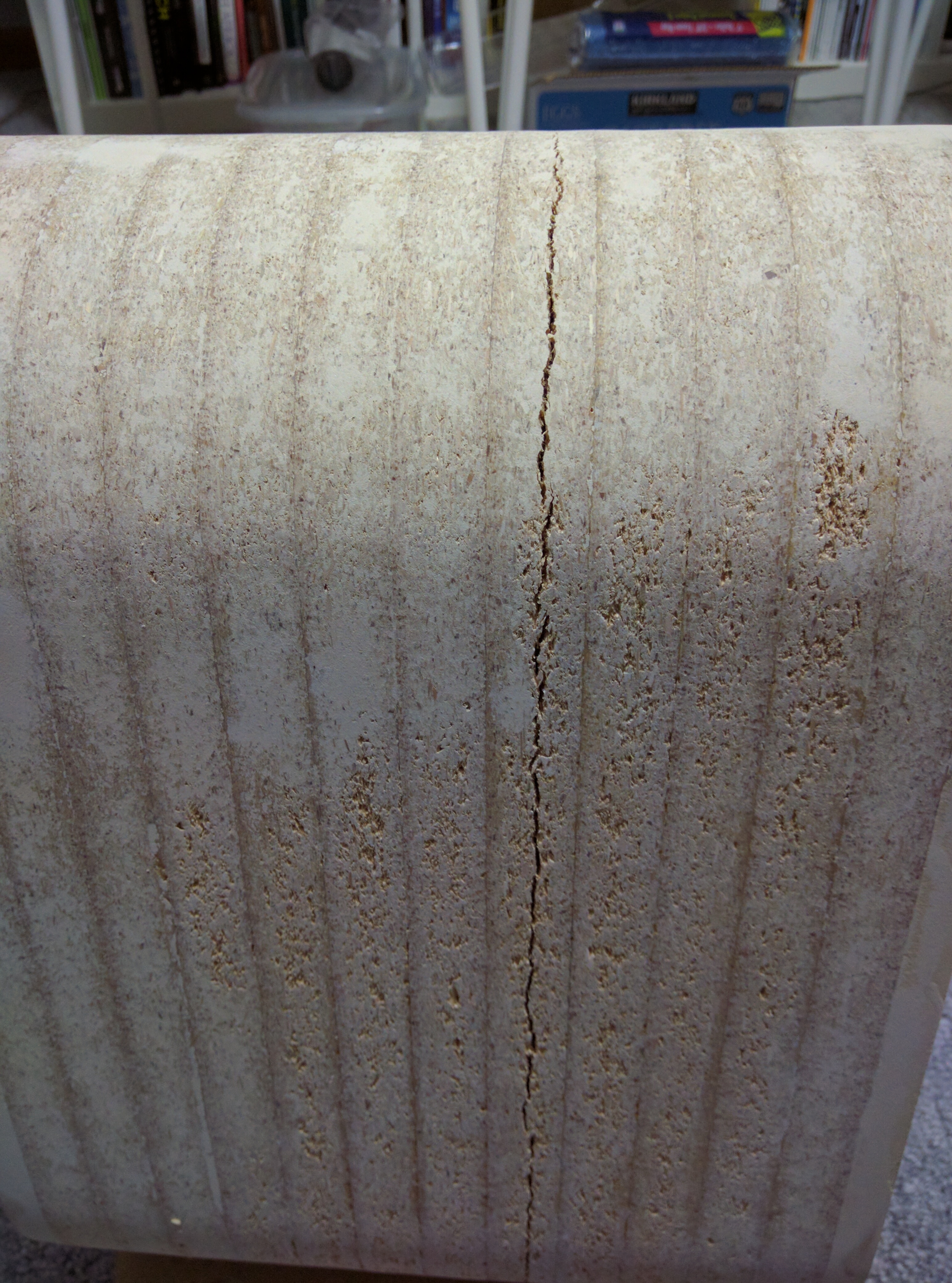Site Links
Howdy, Stranger!
It looks like you're new here. If you want to get involved, click one of these buttons!
Quick Links
Categories
In this Discussion
Who's Online (0)
Cracked cabinets
So, with the extreme cold and dry furnace heat causing all sorts of wood problems, I now have cracked cabinets. On on of the cabinets, the particle board is showing a hairline crack, which goes all the way through to the cabinet inside as I had painted acoustiX on the inside, and that is showing the crack too. On the other one, it separated at the seams. I had used poplar hardwood dowels to align the multiple layers to build the cabinet - maybe these expanded and caused the panes to crack / separate. Here are the snaps of the cracks.
What is the best way to fix these? It took me a lot of time and effort to get these cut, glued and sanded. They were just about ready to be veneered and finished when I noticed the cracks. Between sanding and me noticing the cracks, they were sitting for about 3 weeks in my basement inside which is heated, but we did have the polar cold come through here in midwest and the furnace was overworking.


What is the best way to fix these? It took me a lot of time and effort to get these cut, glued and sanded. They were just about ready to be veneered and finished when I noticed the cracks. Between sanding and me noticing the cracks, they were sitting for about 3 weeks in my basement inside which is heated, but we did have the polar cold come through here in midwest and the furnace was overworking.


Comments
Many might think sealing both sides is excessive but i think it helps stabilize the mdf /ply better. Also more important for sealed cabinets but a CNC uses a raw mdf sheet as a spoil board no holes and the machines vacuum pump can hold down a full 4x8 sheet of mdf or ply through a 4x8 sheet of mdf spoilboard so its definately porous.
The second image, is a clean split at the seam, all around the cabinet, so maybe it can be split and re-glued, the first one, the particle board split. and it split half way and all way around the cabinet.
The cabinet still strong enough, held together by the poplar dowels which was used for aligning and gluing the layers. I just need to seal the crack. So maybe i'll try the epoxy thing and just coat the entire cabinet from the outside. There is no way of getting to the inside, as the end caps with the driver holes are also glued on.
Can epoxy be applied indoors or i need to wait for spring / summer?
Has anyone seen this happen with MDF?
InDIYana Event Website
This would then be sanded and finished (likely painted or veneered).
http://www.loctiteproducts.com/p/pl_ca_prem/overview/Loctite-PL-Premium-Polyurethane-Construction-Adhesive.htm
There's not much smell with the poly glues and they do provide some gap filling. Adding some moisture around the joint before or after the glue up increases the expansion of the poly glue.
Can you insert a needle in the first pictured crack? They sell glue injectors for furniture repair at the woodwoking stores, probably also on Amazon. They have a bottle for the glue and a needle thats big enough to let the glue flow through it, but the needle is probably 1/16" or so.
I always have a tough time sanding think squeeze out of gorilla glue.... end up sanding around the glue rather than the glue....
I wonder if the cause was the dowels, due to different rate of expansion and shrinkage. I just saw a video on FB recently of someone building a translam without the need for dowels to line everything up, I could dig it up for you if you're interested. This person used notched front and rear boards so each lamination had to slide into place, everything locked into place on the same front and rear panels.
https://www.facebook.com/groups/1449567115312949/permalink/1995372194065769/
John, there was a recent trans-lam build in the PE forum that used strips of hardwood glued up as frames and stacked using dowels for alignment. http://techtalk.parts-express.com/forum/tech-talk-forum/1322990-mwaf-project-strafi-translam-build
Ron